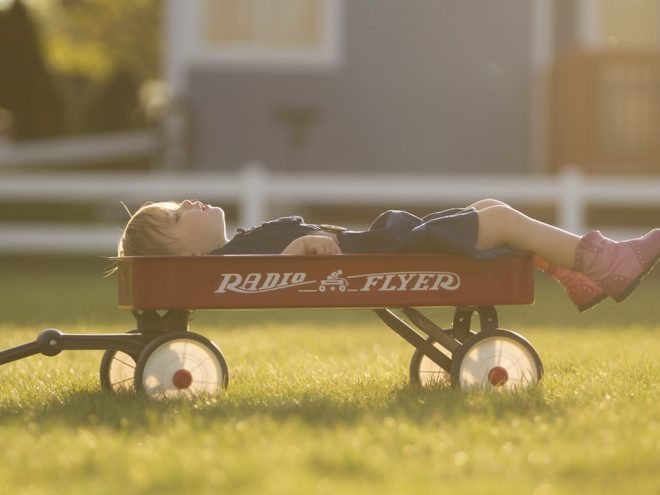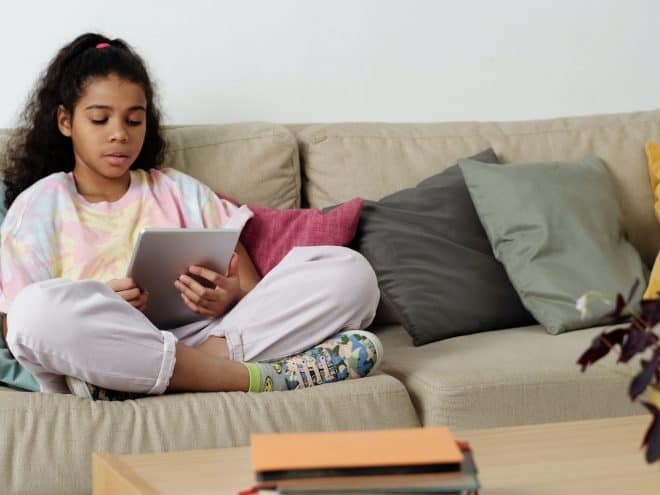In recent years, many schools have discovered the value of helping children develop mindfulness. Educators in such schools report that mindfulness activities help children focus better in class, behave more appropriately with peers and manage difficult feelings without melting down. Parents can follow the example of these mindfulness pioneers by beginning a similar practice in the home.
Practicing mindfulness involves bringing awareness to the present moment and paying attention to the internal and external stimuli surrounding the child. Kids of all ages can begin a mindfulness practice under the guidance of a trusted adult. While there’s no single, specific method of teaching mindfulness to children, the following suggestions can help you get started.
Just Breathe
A simple way to begin a mindfulness practice with your kids involves focusing in on the breath. Turn off the TV and mute the phone to create a quiet, distraction-free environment. Have your child sit or lie down in a comfortable position. Then, guide your little (or not-so-little) one in bringing awareness to their breath. Start by having the child focus first on their normal pace of breathing. What does it feel like? Can they feel their chest rising and falling as they breathe in and out?
Then, have the child vary their breath, breathing in deeply while expanding their chest as much as possible and exhaling all the way to the bottom of their lungs, forcing all the air out. As an alternative, practice Ujjayi breathing, inhaling deeply through the nose and exhaling through the mouth, creating a gentle humming sound.
I Hear With My Little Ear
Another easy way to practice mindfulness with younger and older children alike requires focusing on external stimuli in the environment. While sitting comfortably, instruct children to close their eyes and simply focus on what they hear, from the quiet hum of the refrigerator to passing traffic outside. Alternately, have children make a noise such as a hum for 30 to 60 seconds, then go quiet, taking note of what they hear in the newfound silence.
Heartfelt Mindfulness
A great way to help kids develop mindfulness about how their body feels includes having them become conscious of their heartbeat. Have your children do some jumping jacks or just bounce around vigorously for a full minute. Then, have the children focus inwards and note how their heart rate gradually slows down.
Have younger kids simply sit with their eyes closed, and ask them to count their heartbeats as they inhale and exhale naturally. Remind children that any time they feel anxious or nervous, they can practice counting heartbeats for a minute or two to quiet and calm themselves.
Head to Toe Squeeze
Help kids relax tense muscles while developing mindfulness by having them like down flat on their backs on a comfy surface. Guide the child through squeezing every muscle in their bodies tight, flexing their feet, tightening the muscles of the legs, clenching their fists and raising their shoulders up to their ears as they inhale. Then, as they exhale, they should relax every muscle. Repeat several times, and finish by letting children lie quietly in Savasana (corpse pose).
Give Thanks
Practicing gratitude helps children of all ages appreciate all the things that fill them with joy. Regularly sharing the things they are thankful for helps children release feelings of inadequacy or lack and realize the abundance they truly possess.
Practice gratitude by having the kids sit quietly for 60 to 120 seconds and focus inward on one thing that brought them happiness that day. Additionally, make gratitude practice a part of your nightly family dinner routine by going around the table and having each family member share one thing they gave thanks for during the day.
Meaningful Feelings
Learning how to mindfully cope with emotions helps children improve behavior and interact with others more positively. Encourage children to express their emotions appropriately by first helping them identify how they are feeling. Use a feelings chart with younger children to help them communicate everything from joy to sadness.
Help kids identify how their body reacts physically to different emotions. For example, elation may feel like happy butterflies dancing away in their chests, while frustration may feel like hitting a giant brick wall with their heads.
Connect With the Earth
Nothing lifts the spirits quite like spending time in nature, and children particularly enjoy connecting with the outdoors. Take a mindfulness walk with your kids through a park or along a trail. As you stroll, have the little ones share what they see, what they hear and how they feel. Engage all the senses by having your youngster stick out their tongue and taste the fresh outside air.
Set a Good Example
Finally, as children learn more from what adults do versus what they say, make mindfulness a part of your own daily routine to set a good example for your tots and teens alike. Instead of always guiding children through mindfulness activities, turn the tables and let them guide you through their favorite techniques. Invite children to invent their own mindfulness exercises and share them with the entire family.
Scientific evidence and subjective observation both demonstrate that children who practice mindfulness regularly enjoy greater focus and stronger coping skills than their peers. Mindfulness improves behavior from the inside out, helping kids develop their own moral code as opposed to having one forced upon them with punitive measures. Enjoy a healthier, happier home life by making mindfulness just another part of the day for you and your children alike.






This is so perfect! I don’t have kids myself but I often feel so concerned about kids growing up with so much technology and pressure at school. Teaching children how to be mindful is a brilliant way of combating this. Great blog!
[…] try to make their exercises more kid-friendly. Things like focusing on their heartbeat after 60 seconds of activity or tuning into their breathing for the same amount of time can be a good way to introduce your […]